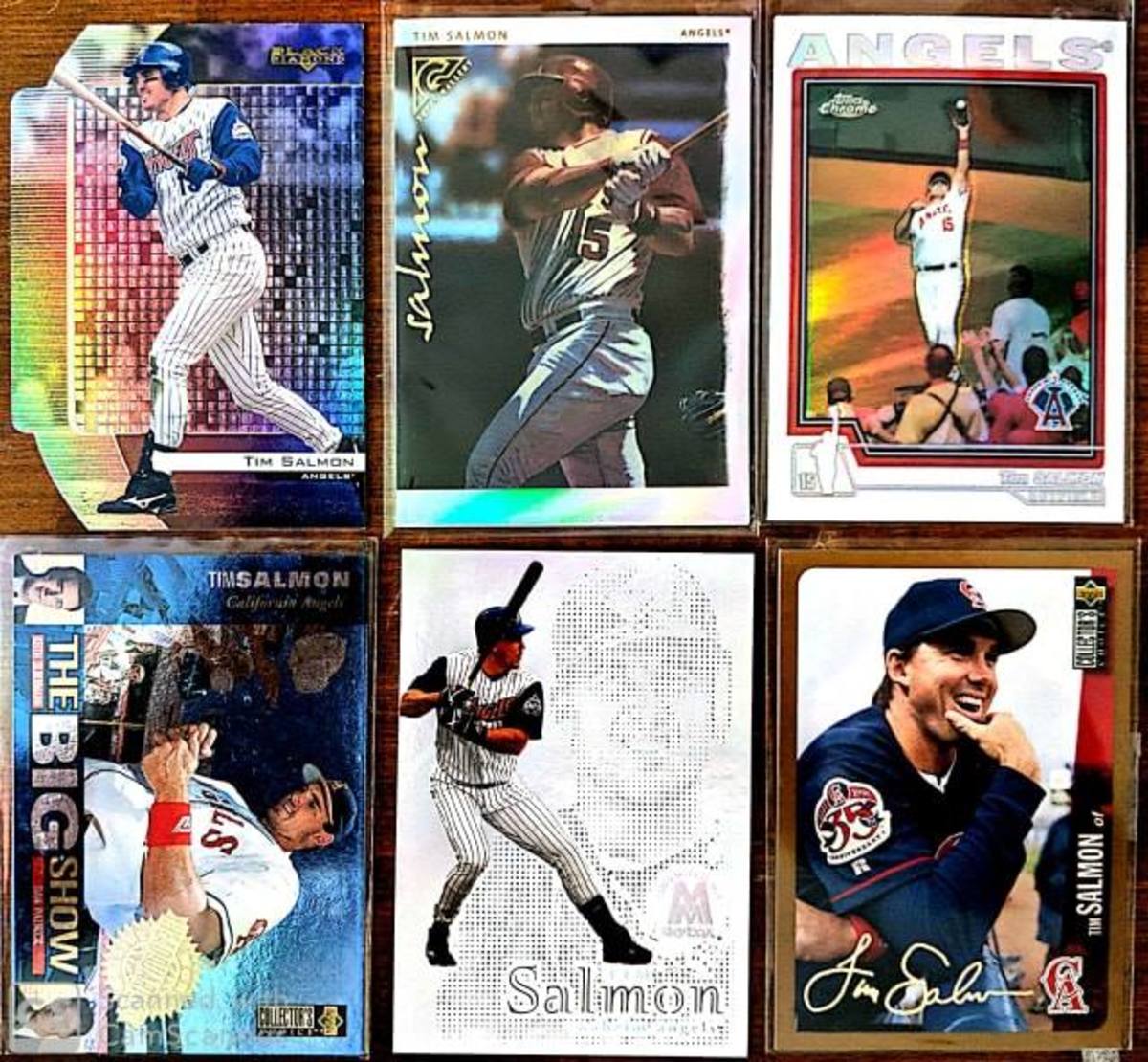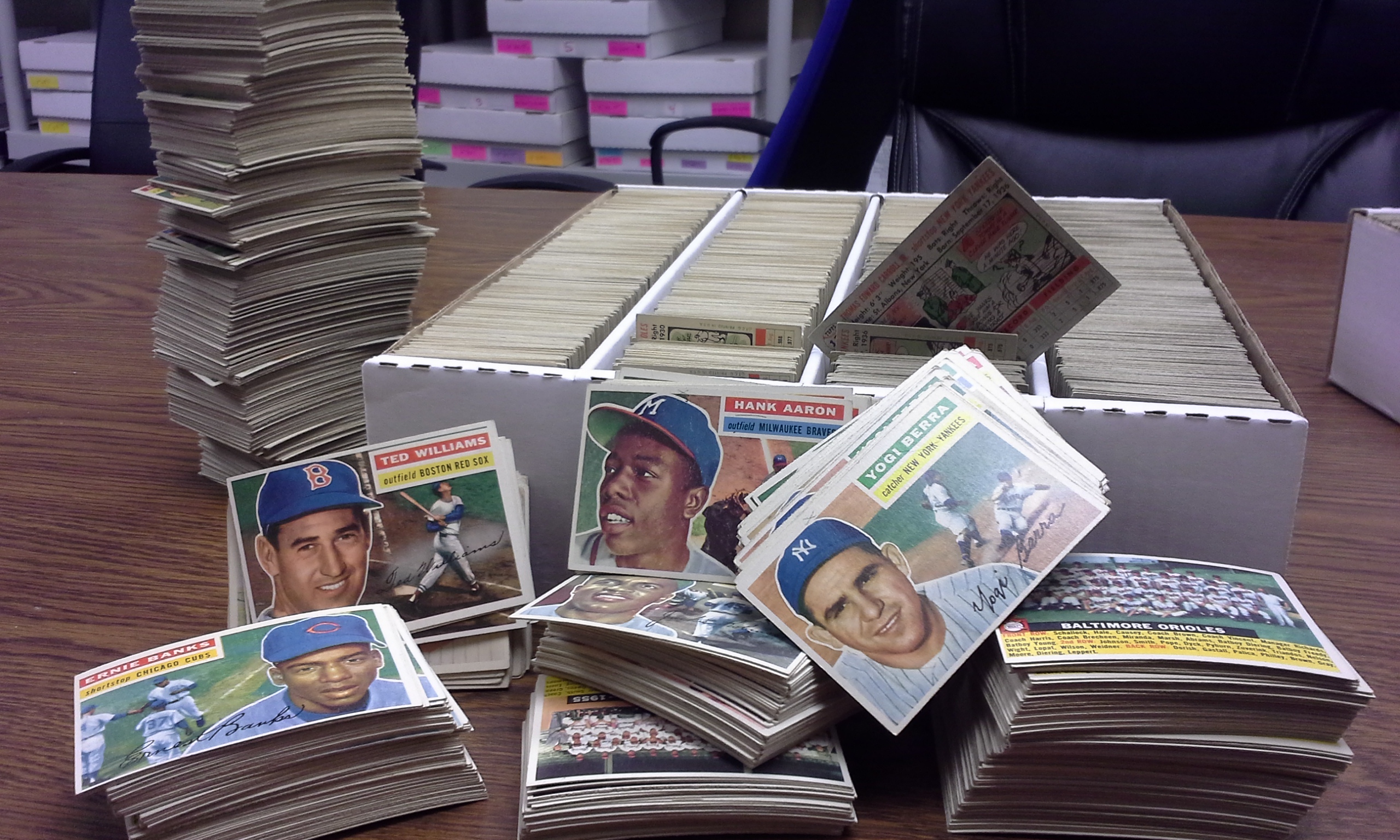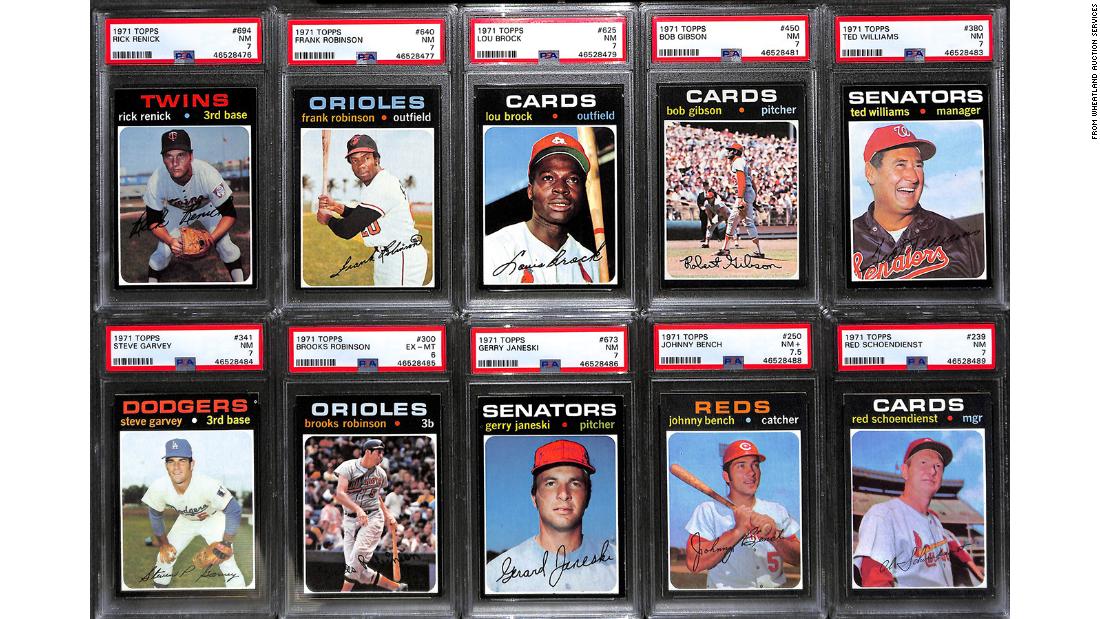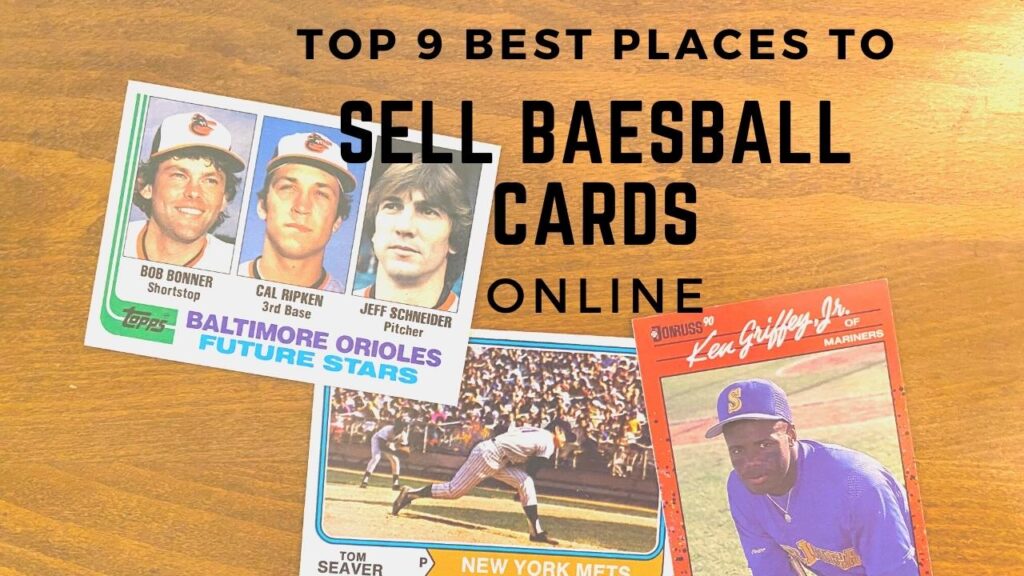Unlocking the Secrets to a Successful Sale
Selling a baseball card collection can be a daunting task, especially for those who are new to the hobby. With so many cards to sort through, price, and market, it’s easy to feel overwhelmed. However, with a well-planned strategy, collectors can achieve the best possible price for their items and make the selling process much smoother. In this article, we will explore the key steps to take when selling a baseball card collection, from organizing and categorizing to determining value and negotiating with buyers.
One of the most critical factors in selling a baseball card collection is having a clear understanding of its value. This requires research and knowledge of the market, as well as an understanding of the condition and rarity of each card. By taking the time to learn about the cards in your collection, you can make informed decisions about pricing and marketing, which can ultimately lead to a more successful sale.
Another essential aspect of selling a baseball card collection is presentation. This includes not only the physical condition of the cards but also how they are displayed and marketed. By taking high-quality photos and writing detailed descriptions, collectors can showcase their cards in the best possible light and attract more buyers.
In addition to these factors, the sales platform chosen can also greatly impact the success of the sale. Online marketplaces like eBay and COMC offer a wide reach and competitive pricing, while specialized card forums and local card shops provide a more targeted audience. By choosing the right platform for your collection, you can increase visibility and attract more buyers.
Finally, negotiation and customer service are critical components of a successful sale. By being responsive to buyer inquiries, flexible with pricing, and providing excellent customer service, collectors can build trust with potential buyers and increase the chances of a successful sale.
By following these steps and taking a thoughtful approach to selling your baseball card collection, you can maximize its value and achieve a successful sale. Whether you’re a seasoned collector or just starting out, understanding how to sell a baseball card collection can help you get the best possible price for your items and make the selling process much smoother.
Organizing and Categorizing Your Collection
Before selling a baseball card collection, it’s essential to organize and categorize the cards to make them more attractive to potential buyers. A well-organized collection can help buyers quickly find the cards they’re looking for, increasing the chances of a sale. Here are some tips on how to sort and categorize your baseball card collection:
Sort cards by player: Separate cards by player, including rookies, veterans, and Hall of Famers. This will make it easier for buyers to find specific cards they’re looking for.
Sort cards by team: Organize cards by team, including current and past teams. This will appeal to buyers who are looking for cards from their favorite team.
Sort cards by year: Separate cards by year, including vintage and modern cards. This will help buyers find cards from specific seasons or eras.
Sort cards by condition: Organize cards by condition, including mint, near-mint, and graded cards. This will help buyers find cards that meet their quality standards.
Use categories and subcategories: Use categories and subcategories to further organize your collection. For example, you can categorize cards by player, then subcategorize by team or year.
Use storage materials: Use storage materials such as binders, pages, and top-loaders to keep your cards organized and protected.
Label and inventory your collection: Label each category and subcategory, and create an inventory list to keep track of your cards. This will make it easier to manage your collection and provide information to potential buyers.
By organizing and categorizing your baseball card collection, you can make it more attractive to potential buyers and increase the chances of a successful sale. A well-organized collection can also help you to better understand the value of your cards and make informed decisions when pricing and marketing them.
When selling a baseball card collection, it’s essential to remember that organization and categorization are key to attracting buyers and achieving a successful sale. By taking the time to sort and categorize your cards, you can create a more appealing and manageable collection that will attract more buyers and increase the chances of a successful sale.
Determining the Value of Your Cards
Determining the value of your baseball cards is a crucial step in selling your collection. The value of a baseball card is determined by several factors, including rarity, condition, and demand. Understanding these factors can help you determine the value of your individual cards or your entire collection.
Rarity is one of the most significant factors in determining the value of a baseball card. Cards that are harder to find, such as limited edition prints or cards from popular players, tend to be more valuable. Condition is also essential, as cards that are in good condition, with minimal wear and tear, are more valuable than those that are damaged or worn.
Demand is another critical factor in determining the value of a baseball card. Cards from popular players or teams tend to be more valuable than those from less popular players or teams. Additionally, cards that are in high demand, such as rookie cards or autographed cards, tend to be more valuable than those that are not as sought after.
To determine the value of your baseball cards, you can research online marketplaces, such as eBay or COMC, to see what similar cards are selling for. You can also consult price guides, such as Beckett Grading Services or Professional Sports Authenticator, to get an idea of the value of your cards.
It’s also essential to get your cards graded and authenticated by a reputable third-party service, such as Professional Sports Authenticator (PSA) or Beckett Grading Services (BGS). This can help increase the value of your cards, as it provides a third-party verification of their authenticity and condition.
When determining the value of your baseball card collection, it’s also important to consider the overall condition of the collection. A collection that is well-organized, with cards that are in good condition, is more valuable than a collection that is disorganized or contains damaged cards.
By understanding the factors that determine the value of your baseball cards, you can make informed decisions when pricing and marketing your collection. This can help you get the best possible price for your cards and ensure a successful sale.
When selling a baseball card collection, it’s essential to remember that determining the value of your cards is a critical step in the process. By researching and understanding the factors that determine the value of your cards, you can make informed decisions and get the best possible price for your collection.
Choosing the Right Sales Platform
When it comes to selling a baseball card collection, choosing the right sales platform is crucial to reaching potential buyers and achieving the best possible price. With numerous options available, collectors must carefully consider the pros and cons of each platform to determine which one best suits their needs.
Online marketplaces like eBay and COMC (Check Out My Cards) are popular choices for selling baseball card collections. These platforms offer a large customer base, competitive pricing, and a range of features to help sellers showcase their items. However, they also charge fees, which can eat into profits. eBay, for example, charges an insertion fee, a final value fee, and a payment processing fee, while COMC charges a listing fee and a commission on sales.
Specialized card forums and social media groups are another option for selling baseball card collections. These platforms are often free to use and offer a targeted audience of collectors who are passionate about baseball cards. However, they may not offer the same level of exposure as online marketplaces, and sellers must be prepared to handle inquiries and negotiations directly.
Local card shops are also a viable option for selling baseball card collections. These shops often have a loyal customer base and can offer a more personalized service than online marketplaces. However, they may not offer the same level of exposure, and sellers must be prepared to negotiate prices and terms.
When choosing a sales platform, collectors should consider the following factors:
- Fees: What fees does the platform charge, and how will they impact profits?
- Exposure: How many potential buyers will see the collection, and how targeted is the audience?
- Competition: How many other sellers are offering similar items, and how competitive is the pricing?
- Services: What services does the platform offer, such as payment processing and shipping?
- Reputation: What is the platform’s reputation among collectors, and how trustworthy is it?
By carefully considering these factors, collectors can choose the right sales platform for their baseball card collection and increase their chances of achieving a successful sale. Whether selling through an online marketplace, specialized card forum, or local card shop, a well-planned strategy and a thorough understanding of the platform’s features and fees are essential to maximizing profits.
Creating an Effective Listing
When selling a baseball card collection, creating an effective listing is crucial to attracting potential buyers and achieving a successful sale. A well-crafted listing can help showcase the collection’s value, build trust with buyers, and ultimately drive sales. Here are some tips on how to create an effective listing for your baseball card collection:
Write a Detailed and Honest Description
A detailed and honest description is essential to building trust with potential buyers. When writing your listing, include information about the collection’s contents, condition, and any flaws or defects. Be transparent about the cards’ authenticity, rarity, and value. Avoid using overly promotional language or making exaggerated claims, as this can damage your credibility and deter buyers.
Use High-Quality Images
High-quality images are vital to showcasing the collection’s condition and authenticity. Use a good camera or scanner to take clear, well-lit photos of the cards from multiple angles. Consider using a photo editing software to enhance the images and remove any blemishes or imperfections. Make sure to include images of the cards’ fronts and backs, as well as any notable features or flaws.
Set Competitive Pricing
Setting competitive pricing is critical to attracting buyers and achieving a successful sale. Research similar listings on the sales platform or online marketplaces to determine the going rate for your cards. Consider factors such as the cards’ rarity, condition, and demand when setting your prices. Be prepared to negotiate, and consider offering discounts for bulk purchases or bundling multiple cards together.
Include Relevant Keywords
Including relevant keywords in your listing can help attract buyers who are searching for specific cards or collections. Use keywords such as the player’s name, team, year, and card number to help your listing appear in search results. Avoid using irrelevant or misleading keywords, as this can harm your listing’s visibility and credibility.
Provide Excellent Customer Service
Providing excellent customer service is essential to building trust with buyers and ensuring a smooth transaction. Respond promptly to inquiries and messages, and be prepared to answer questions about the collection’s contents, condition, and value. Consider offering a satisfaction guarantee or return policy to alleviate any concerns buyers may have.
By following these tips, you can create an effective listing that showcases your baseball card collection’s value and attracts potential buyers. Remember to stay flexible and open-minded during the negotiation process, and be prepared to adapt to changing market conditions. With a well-crafted listing and a thoughtful approach, you can maximize your chances of achieving a successful sale and getting the best possible price for your collection.
Negotiating with Buyers and Closing the Sale
Negotiating with buyers is a crucial step in the process of selling a baseball card collection. It requires a combination of preparation, flexibility, and effective communication. By understanding the buyer’s needs and being open to reasonable offers, sellers can increase their chances of closing the sale and achieving a successful outcome.
Responding to Offers
When responding to offers, it’s essential to be prompt and professional. Acknowledge the buyer’s offer and express appreciation for their interest in the collection. If the offer is acceptable, respond with a confirmation of the sale and provide instructions for payment and shipping. If the offer is not acceptable, respond with a counteroffer or a polite decline.
Counteroffers and Negotiations
Counteroffers and negotiations are a natural part of the sales process. When receiving a counteroffer, consider the buyer’s perspective and be willing to compromise. If the counteroffer is reasonable, respond with a revised offer or a acceptance of the terms. If the counteroffer is not reasonable, respond with a polite decline and a reiteration of the original offer.
Handling Questions and Concerns
Buyers may have questions or concerns about the collection, and it’s essential to address them promptly and professionally. Provide clear and concise answers to questions, and be transparent about the collection’s condition and authenticity. If concerns arise, offer solutions or alternatives that meet the buyer’s needs.
Being Flexible and Open-Minded
Being flexible and open-minded is crucial during the negotiation process. Be willing to consider different pricing options, payment terms, and shipping arrangements. By being adaptable and responsive to the buyer’s needs, sellers can increase their chances of closing the sale and achieving a successful outcome.
Closing the Sale
Once an agreement is reached, it’s essential to close the sale promptly and efficiently. Provide clear instructions for payment and shipping, and ensure that the buyer receives the collection in the agreed-upon condition. Follow up with the buyer to ensure satisfaction and provide excellent customer service.
By following these tips, sellers can effectively negotiate with buyers and close the sale of their baseball card collection. Remember to stay calm, professional, and flexible throughout the negotiation process, and be willing to adapt to changing circumstances. With a well-planned strategy and effective communication, sellers can achieve a successful sale and maximize their profit.
Ensuring a Smooth Transaction
Ensuring a smooth transaction is crucial when selling a baseball card collection. A successful transaction not only ensures that the buyer receives their cards in good condition, but also helps to build trust and reputation as a seller. Here are some tips on how to ensure a smooth transaction:
Packaging and Shipping Cards Securely
Packaging and shipping cards securely is essential to prevent damage during transit. Use sturdy cardboard boxes, bubble wrap, and packing peanuts to protect the cards from scratches, bends, and other forms of damage. Consider using a trackable shipping method, such as USPS or UPS, to ensure that the cards arrive safely and on time.
Providing Excellent Customer Service
Providing excellent customer service is critical to ensuring a smooth transaction. Respond promptly to buyer inquiries, and be transparent about the condition and authenticity of the cards. Consider offering a satisfaction guarantee or return policy to alleviate any concerns the buyer may have.
Handling Issues that May Arise
Despite best efforts, issues may still arise during the transaction. Be prepared to handle any problems that may occur, such as damaged cards or delayed shipping. Consider having a plan in place for resolving disputes, such as offering a refund or replacement cards.
Using Secure Payment Methods
Using secure payment methods is essential to protecting both the buyer and seller from fraud. Consider using payment methods such as PayPal or credit cards, which offer buyer protection and dispute resolution services.
Keeping Records of the Transaction
Keeping records of the transaction is important for both the buyer and seller. Consider keeping a record of the sale, including the date, price, and condition of the cards. This can help to prevent disputes and ensure a smooth transaction.
By following these tips, sellers can ensure a smooth transaction and build trust with buyers. Remember to stay organized, communicate effectively, and be prepared to handle any issues that may arise. With a little planning and effort, sellers can ensure a successful transaction and maximize their profit when selling their baseball card collection.
Maximizing Your Profit
Maximizing profit is a key goal for anyone selling a baseball card collection. By pricing cards competitively, minimizing fees, and taking advantage of tax deductions, sellers can increase their earnings and achieve a successful sale. Here are some tips on how to maximize profit when selling a baseball card collection:
Pricing Cards Competitively
Pricing cards competitively is essential to attracting buyers and maximizing profit. Research the market value of each card and price them accordingly. Consider using pricing guides, such as Beckett Grading Services or Professional Sports Authenticator, to determine the value of each card. Be prepared to negotiate and adjust prices based on buyer feedback and market conditions.
Minimizing Fees
Minimizing fees is crucial to maximizing profit. Consider using online marketplaces with low fees, such as COMC or Sportslot, to sell your collection. Avoid using marketplaces with high fees, such as eBay, unless you are selling high-value cards or large collections. Be aware of any additional fees, such as payment processing fees or shipping costs, and factor them into your pricing.
Taking Advantage of Tax Deductions
Taking advantage of tax deductions is an important consideration for sellers. Consider consulting with a tax professional to determine which expenses are deductible, such as shipping costs or packaging materials. Keep accurate records of all expenses and sales to ensure you can take advantage of tax deductions and minimize your tax liability.
Using Auctions Strategically
Using auctions strategically can help maximize profit. Consider using auctions for high-value cards or rare collections, as they can attract multiple bidders and drive up prices. Be aware of auction fees and ensure you understand the terms and conditions of the auction before listing your cards.
Providing Excellent Customer Service
Providing excellent customer service is essential to building trust with buyers and maximizing profit. Respond promptly to buyer inquiries, and be transparent about the condition and authenticity of the cards. Consider offering a satisfaction guarantee or return policy to alleviate any concerns buyers may have.
By following these tips, sellers can maximize their profit when selling a baseball card collection. Remember to stay organized, research the market, and be prepared to adapt to changing market conditions. With a little planning and effort, sellers can achieve a successful sale and maximize their earnings.







